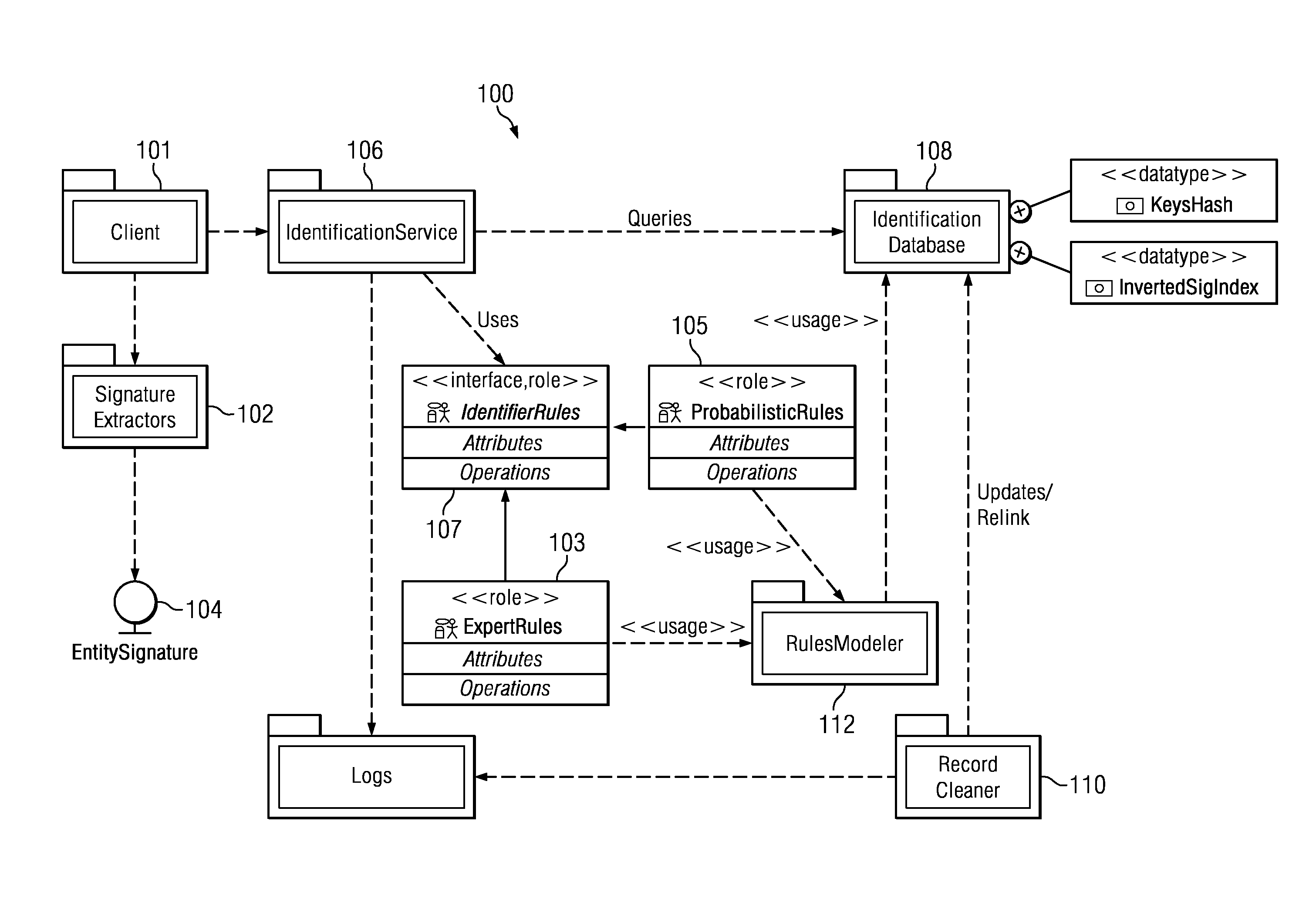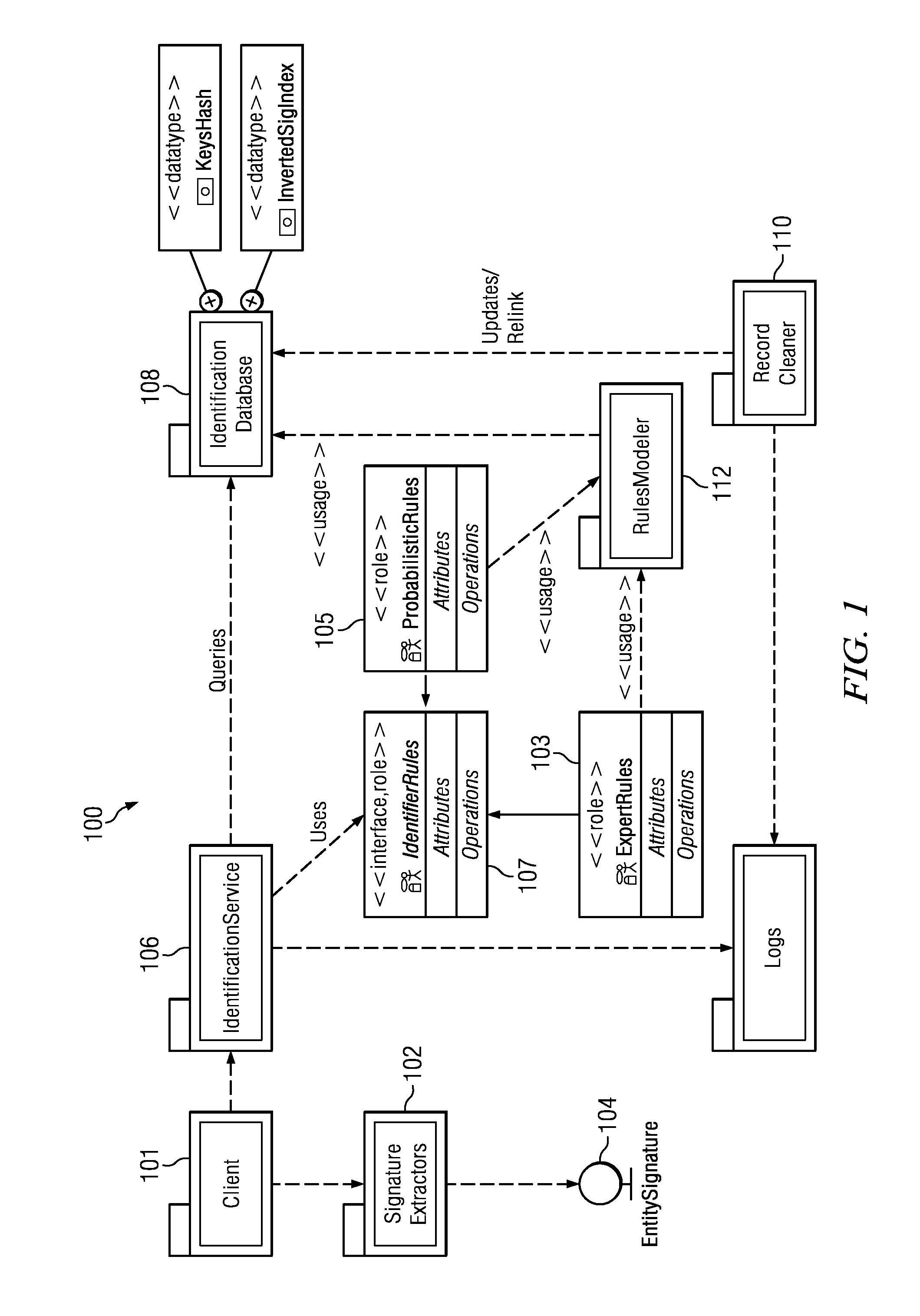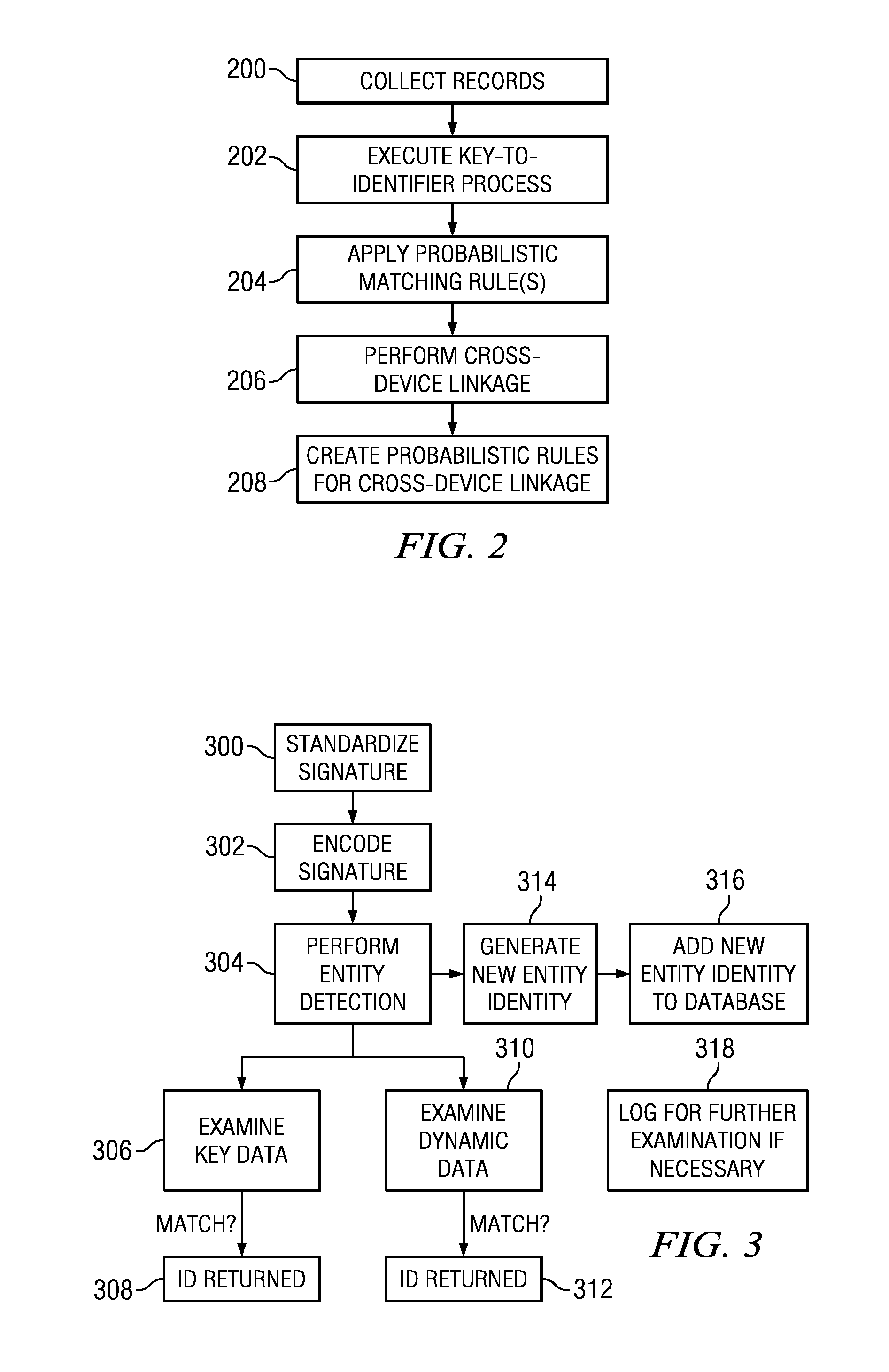Uniquely identifying a network-connected entity
a network-connected entity and unique technology, applied in the field of unique identification of entities, can solve the problems of difficult use, inaccessible identifiers to developers, and not always easy to determine the identity of a person or entity
- Summary
- Abstract
- Description
- Claims
- Application Information
AI Technical Summary
Benefits of technology
Problems solved by technology
Method used
Image
Examples
Embodiment Construction
[0020]According to this disclosure, preferably users and their devices are identified through a set of one or more features, although not all of these features need to be present at the same time. Depending on the nature of the feature, a single feature may be sufficient to uniquely identify the entity. Thus, e.g., when the entity is a single user using a single device, and where the feature is a device ID, that ID itself is enough of an identifier. On the other hand, when the device ID is not available, or when the same user uses multiple devices to access the content, a single identifier of this type typically is not available to identify the user. Indeed, and as will be seen below, when many of these features are combined (or aggregated), they can be used to link to the same entity.
[0021]Thus, according to one aspect of this disclosure, a set of features (or a subset thereof) are associated together to identify the entity. Preferably, a set of rules are used to select the feature...
PUM
 Login to View More
Login to View More Abstract
Description
Claims
Application Information
 Login to View More
Login to View More - R&D
- Intellectual Property
- Life Sciences
- Materials
- Tech Scout
- Unparalleled Data Quality
- Higher Quality Content
- 60% Fewer Hallucinations
Browse by: Latest US Patents, China's latest patents, Technical Efficacy Thesaurus, Application Domain, Technology Topic, Popular Technical Reports.
© 2025 PatSnap. All rights reserved.Legal|Privacy policy|Modern Slavery Act Transparency Statement|Sitemap|About US| Contact US: help@patsnap.com



